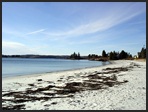
Yesterday, November 30, was the third trip to the beach. It was a cold 25 degrees F., and it had snowed lightly the night before.
The sky was grey, as Spot and I left the house around noon. But as we traveled down the point the sky grew brighter. The beach was empty. Tide was low, and slack. It was not a super low tide, but was out. And the sun was low in the sky.
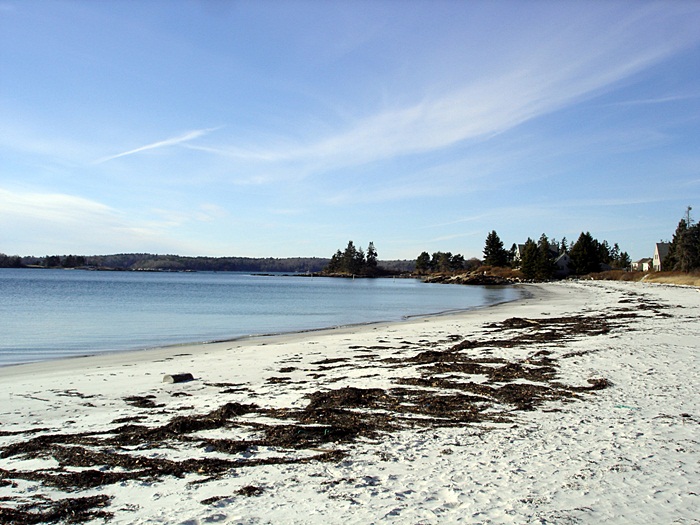
PEMAQUID BEACH- November 30,2012
Since last week, the day after Thanksgiving, the weather had turned cold. The rugosa roses and grasses on the edge of the small dunes that surround the beach are thatched colored.
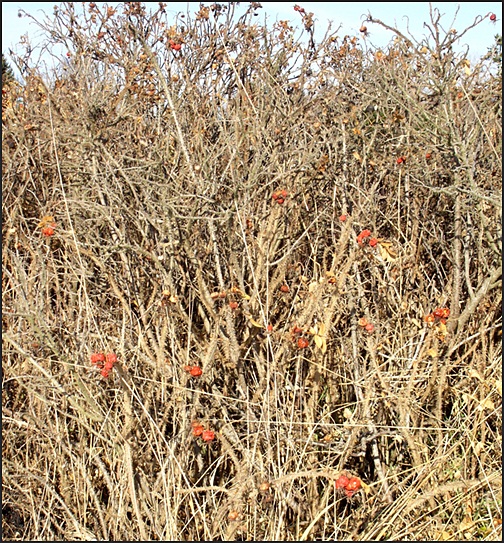
And the rose hips are shriveled from repeated freezing and thawing.
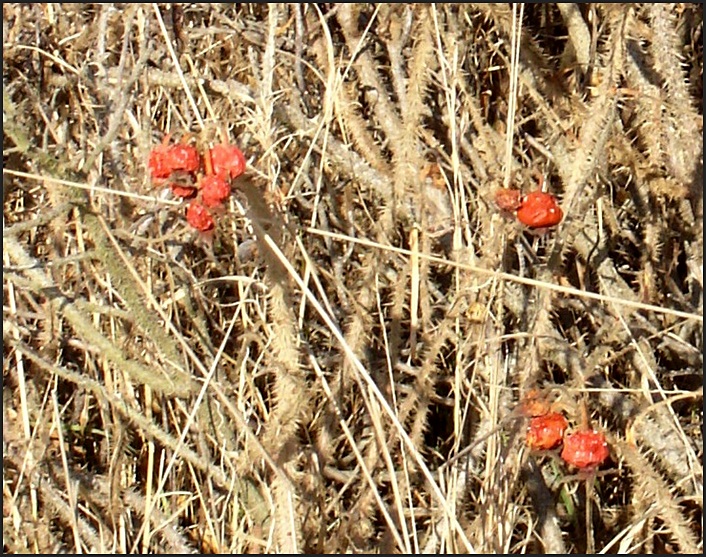
It was very still as we started down the beach… the water was not lapping, no birds were seen or heard, which seemed odd. There are usually gulls and other birds around the both the beach and the salt marsh in back of it.
About half way down the arm of the cove I started to hear a gulping sound.. the tide had turned. By the time we reached the end it was a steady sound, as the waves started to gather momentum and strength.
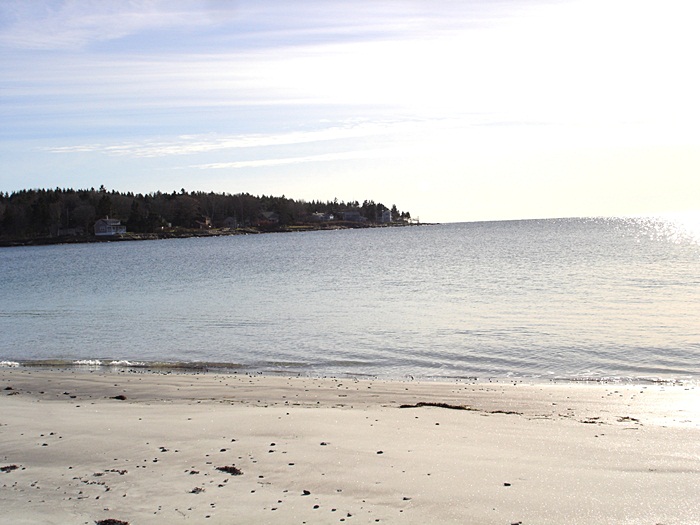
THE TIDE HAS TURNED
It was as if the turning tide released something… a cardinal flew into a tree at the edge of the sand, a gull was heard, and the wind picked up.
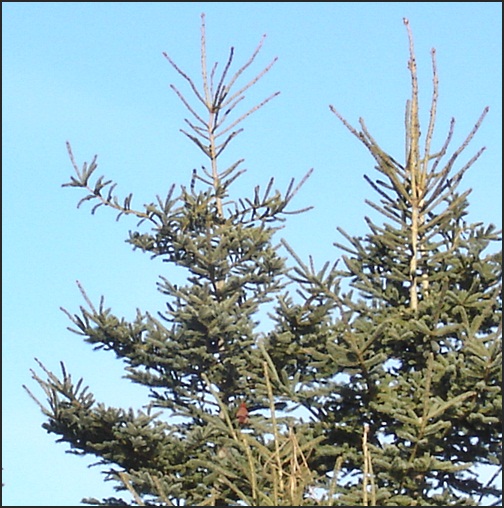
A female cardinal is barely visible.
I think one of the reasons people like going to a beach is one never knows what one will happen upon… what has washed up, how are stones and seaweed arranged on the sand,
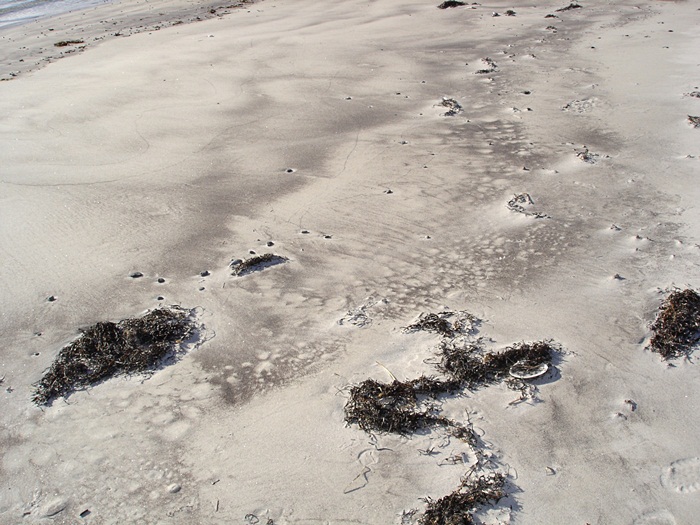
what shell will one find…
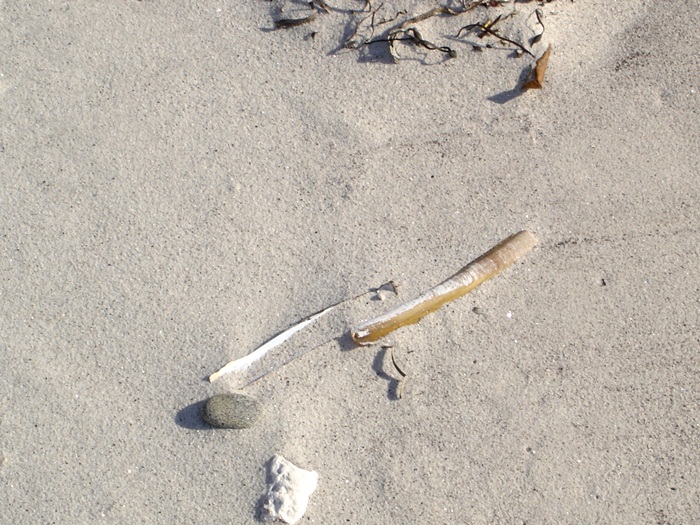
A RAZOR CLAM SHELL-
something not found here often
There is an element of anticipation, of suspense, when one goes to a beach… a surprise might be right around the corner. And this day, there was. An arm of rock marks the end of the beach. And there, at the end of the beach, in the sand was this:
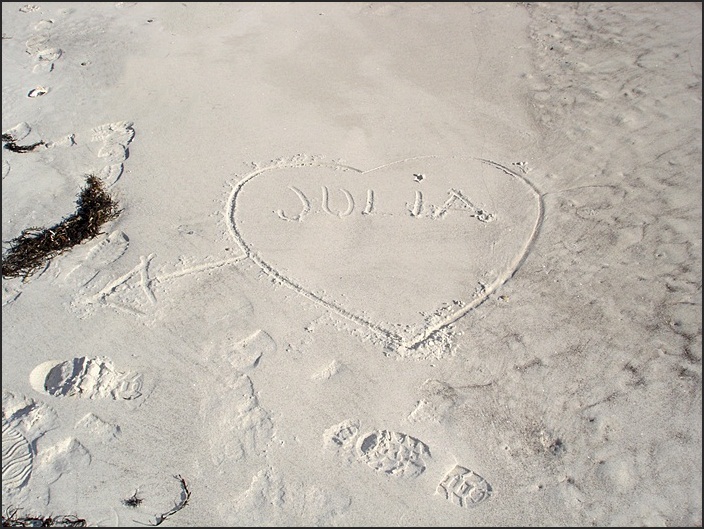
Turning to walk to the other end of the beach,
one could see the waves were coming in at an angle to the shore,
making a slight rip current effect.
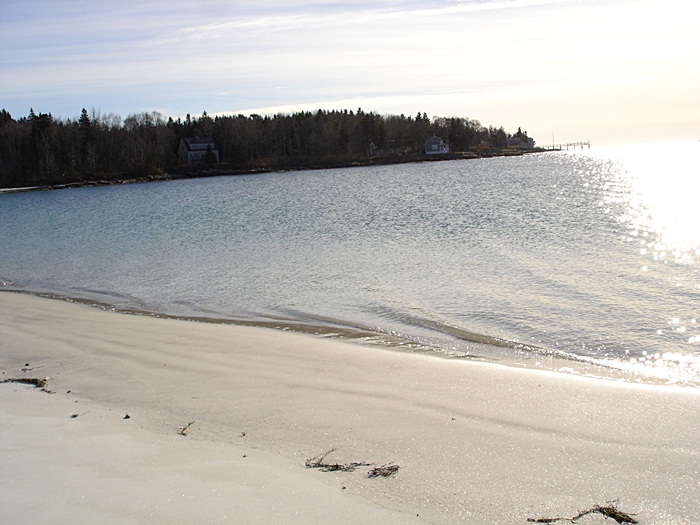
One could see the waves gaining strength,
as they moved up the shallow angle of the beach.
Their motion created a lacy scallop effect as they met the sand,
which was accentuated at the far curve of the beach.
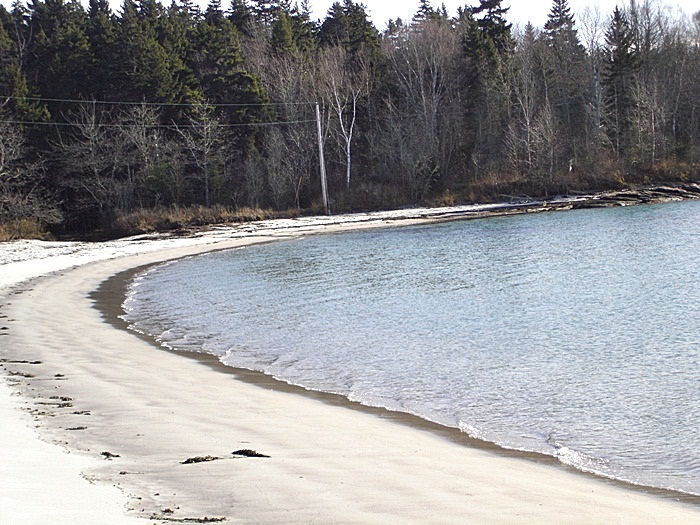
The low angle of the sun throws the objects on the beach into high relief.
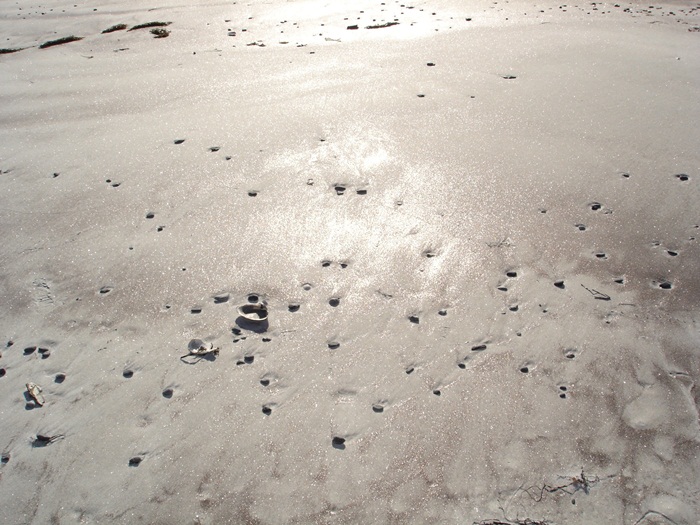
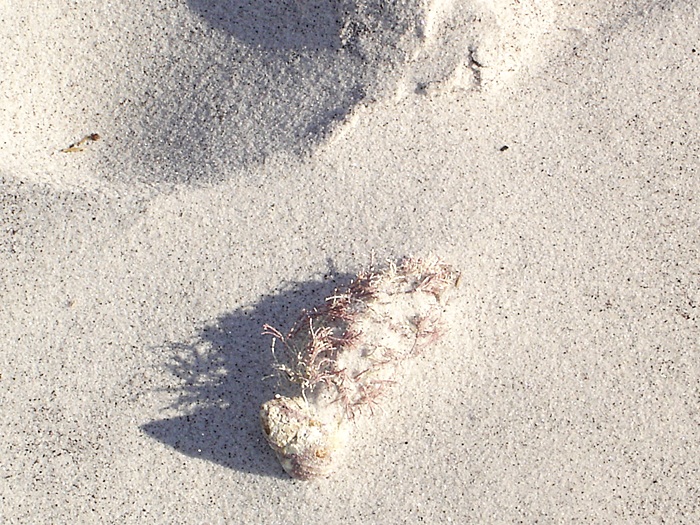
A shell with lavender sea weed has a delicacy that belies its time at sea.
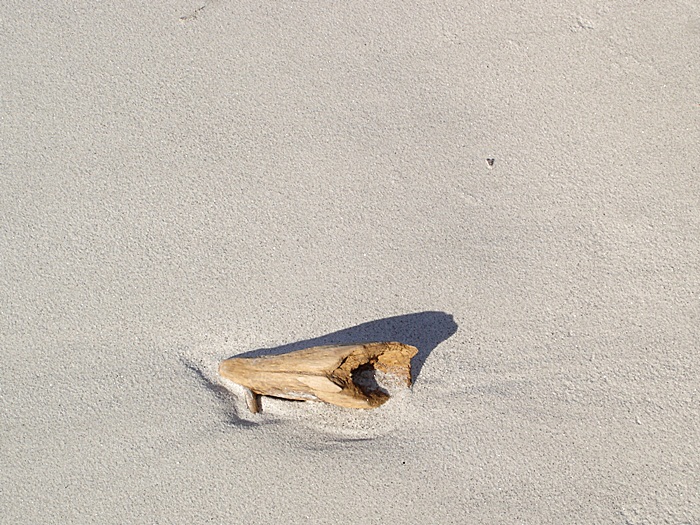
A small piece of driftwood and shadow has a stark look,
that reminds one of Georgia O’Keefe.
As one walks along the beach
one sees vignette after vignette of things
cast up by the sea
looking as if someone carefully arranged them.
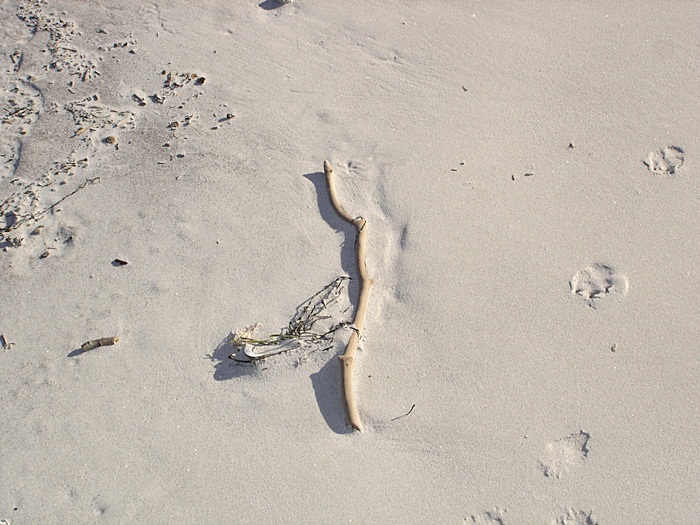
At the other end of the beach, where the curve is most acute, is a small stream that drains the salt water marsh in back of the dunes. The beach then continues its curve, and ends in a rocky point.
The stream has carved out a bed through the sand. With every high tide the bed is changed, and as the tide ebbs, the stream carves out a new one. Twice a day, every day, the stream bed changes. The slope of the beach is quite shallow, even at the curve. As I watched, one could see the tide gaining strength, and pushing water up the stream, like a miniature bore tide.
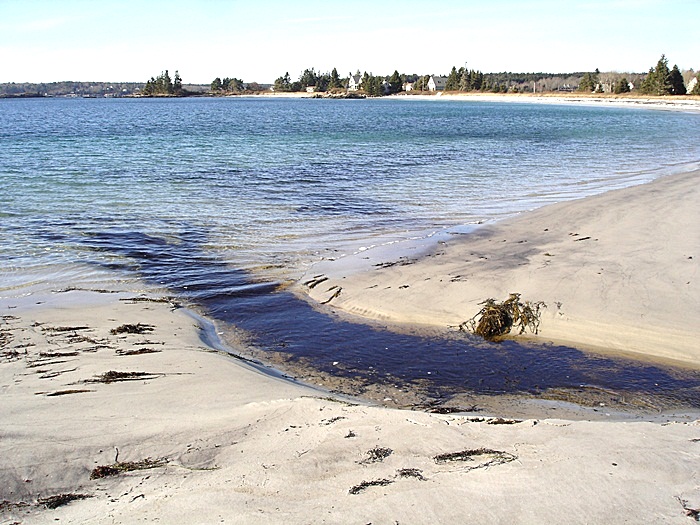
Watching, one could see the smooth muscles of the ocean water pushing against the stream.
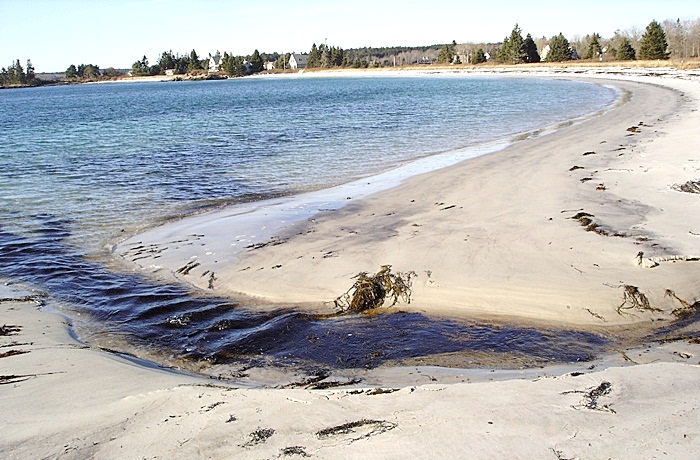
After the stream the beach changes.
Rocks, covered with bladder seaweed, holding small tide pools, are numerous.
And in the water are large rocks with more bladder seaweed,
which begins to float as the tide comes in.
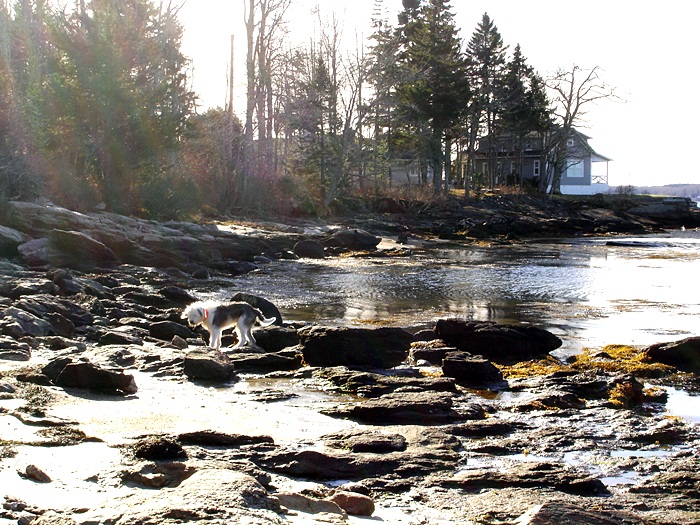
Spot exploring.
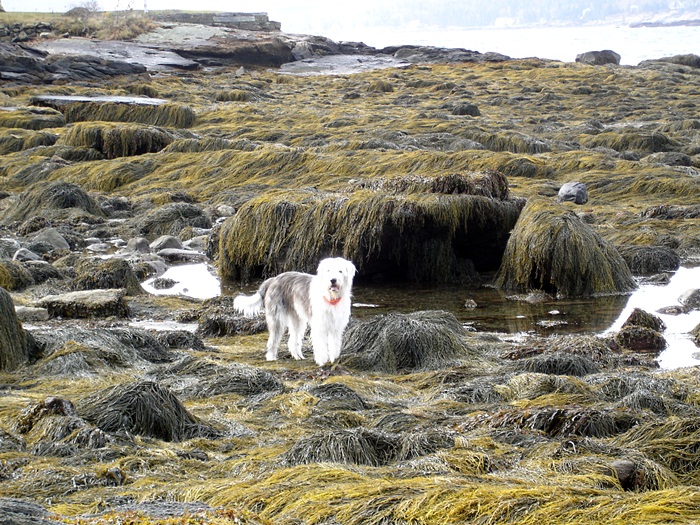
Spot Among the Tide Pools
Turning we started back. As we did, we were hit by wind. Unnoticed, with our backs to it, a strong wind had picked up, not from the water, but from the land. And it was cold! We walked back, past the stream, jumping it, and made our way to the far end of the beach. This end of the beach is more protected from the water currents, and not as deep. The waves comes in smoothly along the beach.
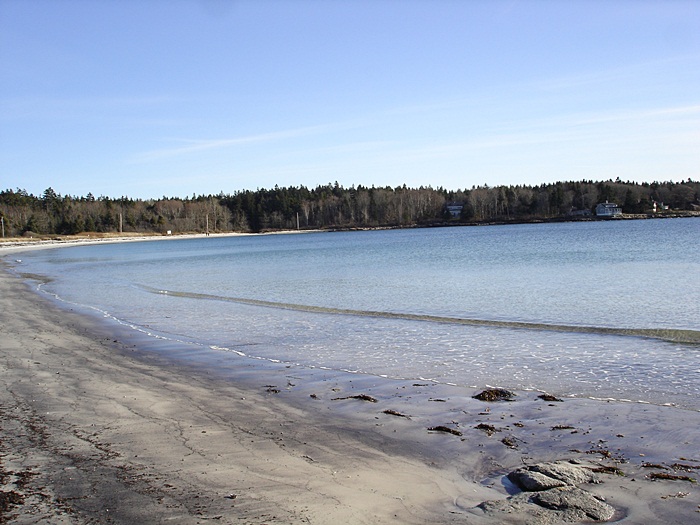
Turning around there, I was glad to have the wind at my back. We were just to the path through the dunes to go back to the car, when I spotted a lot of movement in the water past the stream. I could not make it out. So, to Spot’s surprise, we continued on. At first I thought it was fish that had come in on the tide. Then, I thought it might be a seal, but it was in too far.
It was not until almost parallel with them that I could see it was a pair of diving ducks.
They were out beyond a float of seaweed.
They would dive, one after the other.
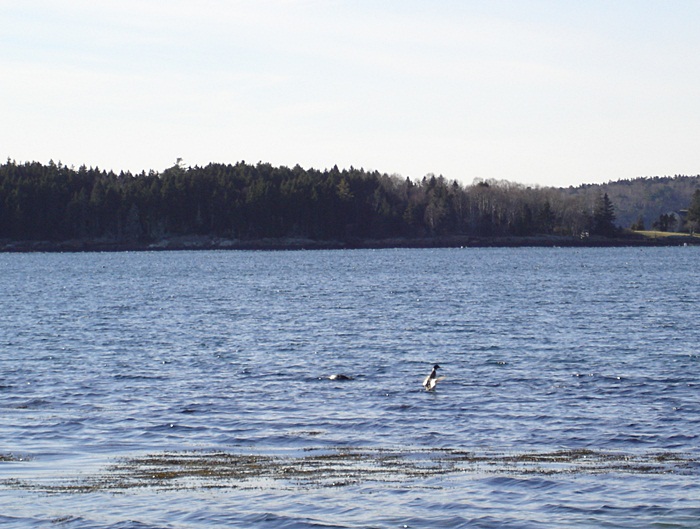
One duck is diving
while the other shakes out its wings
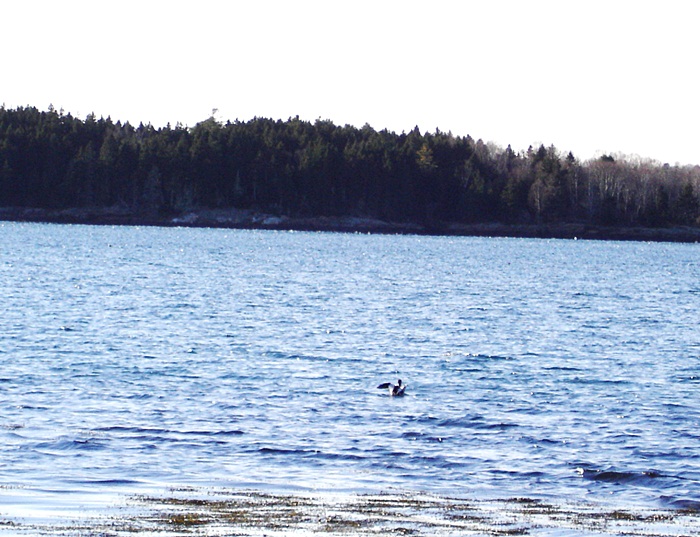
After two dives the ducks would shake out their wings.
Curiosity satisfied, we headed back into the wind,
walking to the path that would lead out to the road where the car was parked.
Spot slept all the way home.
